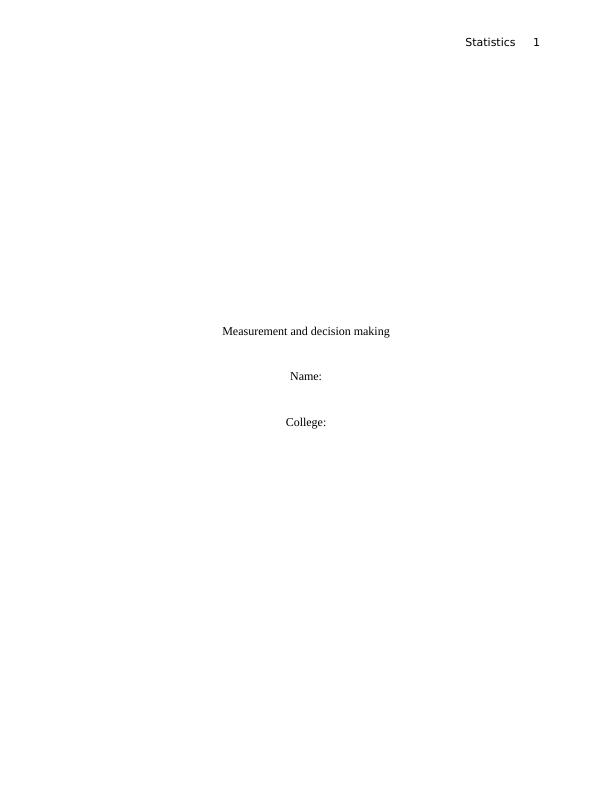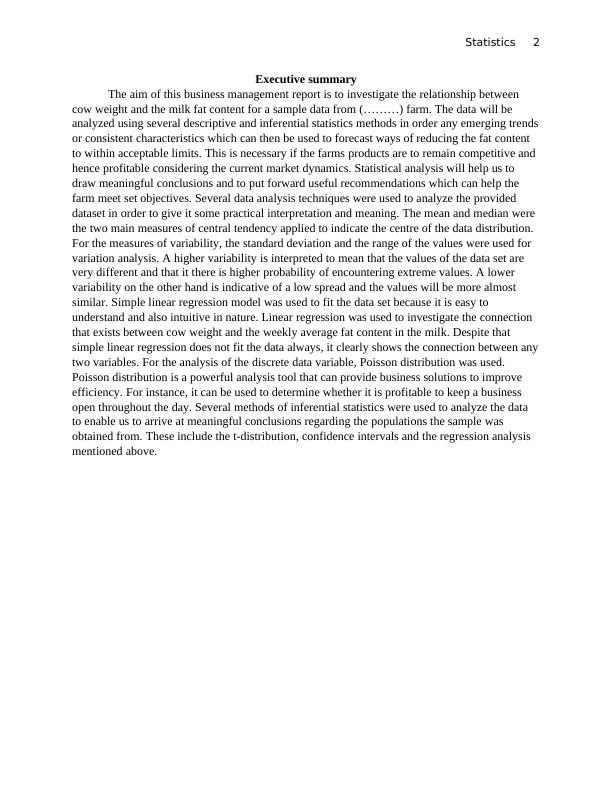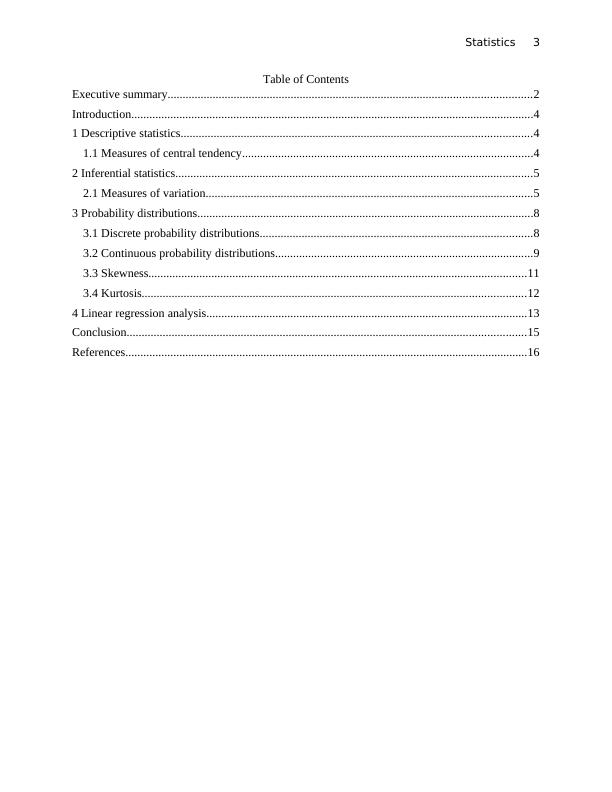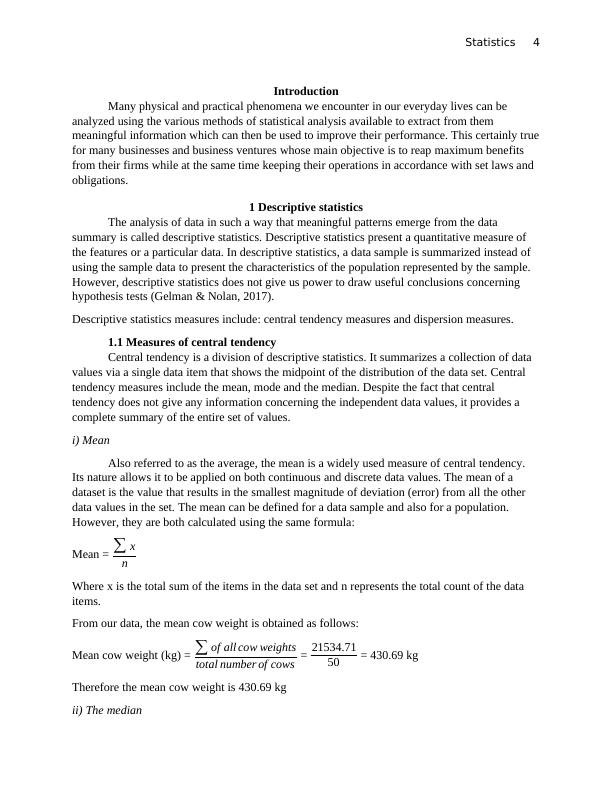Statistics: Measurement and Decision Making
Investigate, evaluate, and suggest solutions for Schrute Farms to maintain their business after the new law is in effect on 1 January 2019, where the amount of fat content in cow milk will be reduced from 5% to 4% or less in order for it to be sold in the market.
18 Pages4640 Words148 Views
Added on 2022-12-14
About This Document
This business management report investigates the relationship between cow weight and milk fat content using descriptive and inferential statistics methods. It analyzes data to identify trends and make recommendations for reducing fat content. The report explores measures of central tendency, variation, and probability distributions. It also uses linear regression analysis to understand the connection between cow weight and milk fat content. Inferential statistics techniques are applied to draw conclusions about the population. College: [College Name]
Statistics: Measurement and Decision Making
Investigate, evaluate, and suggest solutions for Schrute Farms to maintain their business after the new law is in effect on 1 January 2019, where the amount of fat content in cow milk will be reduced from 5% to 4% or less in order for it to be sold in the market.
Added on 2022-12-14
ShareRelated Documents
End of preview
Want to access all the pages? Upload your documents or become a member.
Analysis of Call Centre Operations using Statistical Techniques
|11
|3165
|282
SPSS: Four Levels of Measurement, Measures of Central Tendency and Dispersion, Descriptive vs Inferential Statistics
|7
|1353
|29
Data Analysis and Statistics
|7
|1648
|37
Interpret the Central Measures of a Variable
|8
|1599
|303
Business Management and Statistics Report
|12
|1224
|27
What is the goal of descriptive statistics? Answer: Statistics
|7
|965
|423




